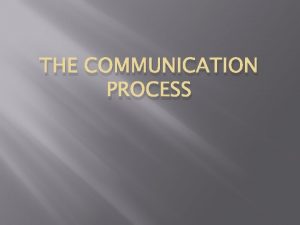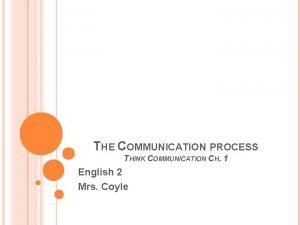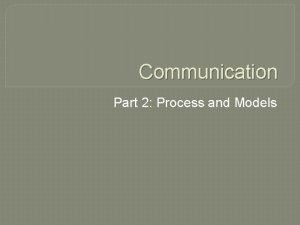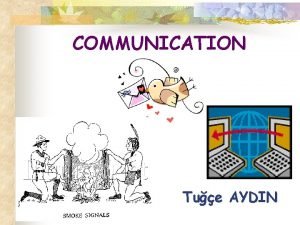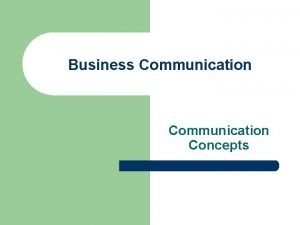English 10 COMMUNICATION COMMUNICATION Communication is the process















- Slides: 15

English 10 COMMUNICATION

COMMUNICATION �Communication is the process of sending and receiving messages in order to share meaning.

WE NEED TO COMMUNICATE TO FULFILL OUR NEEDS: �Physically �Socially �Psychologically (emotional and mental needs)

FIVE FUNCTIONS OF COMMUNICATION: �to inform �to express feelings �to express imagination �to perform social rituals �to persuade

TERMS TO KNOW: �Feedback The receiver tells you in some way how accurately he or she received your message. RESPONSE �Channel The means through which a message is transmitted.

�Encoding �Selecting the best message and channel to make your point. �Decoding �The receiver’s filtering process.

INTERFERENCE �Describes the breakdowns in accurate communication. COMMUNICATION

TWO TYPES OF INTERFERENCE �External �Blocks the sender’s message from reaching the receiver ( something in the environment). �Internal �Exists within the communicators.

COMMUNICATION MODEL – Sender Receiver Message Hi baby! Feedback Hi cutie pie! Want to go to the game with me? Interference

TYPES OF SPEECHES � Impromptu � Speaking on the spur of the moment (without formal presentation or preparation). � Manuscript � Written speech out word for word. � Memorized � Requires you to memorize the speech and deliver it word for word without notes. � Extemporaneous � You prepare, outline, and practice then deliver using a few notes.

VOCAL CHARACTERISTICS �Pitch �The highness or lowness of a voice. �Rate �How quickly or slowly you speak. �Volume �The loudness or softness of your voice. �Quality �The overall sound of your voice.

VOCALIZED PAUSES This is a common problem among speakers. People fill in periods of silence with � “ah” � “um” � “you know” � “okay” � “like”

SPEECH ANXIETY � Speech anxiety is getting nervous when you speak in public.

The biggest fear of 42% of Americans is public speaking.

THE END!
 Hình ảnh bộ gõ cơ thể búng tay
Hình ảnh bộ gõ cơ thể búng tay Bổ thể
Bổ thể Tỉ lệ cơ thể trẻ em
Tỉ lệ cơ thể trẻ em Gấu đi như thế nào
Gấu đi như thế nào Chụp phim tư thế worms-breton
Chụp phim tư thế worms-breton Bài hát chúa yêu trần thế alleluia
Bài hát chúa yêu trần thế alleluia Môn thể thao bắt đầu bằng chữ f
Môn thể thao bắt đầu bằng chữ f Thế nào là hệ số cao nhất
Thế nào là hệ số cao nhất Các châu lục và đại dương trên thế giới
Các châu lục và đại dương trên thế giới Công thức tính độ biến thiên đông lượng
Công thức tính độ biến thiên đông lượng Trời xanh đây là của chúng ta thể thơ
Trời xanh đây là của chúng ta thể thơ Mật thư tọa độ 5x5
Mật thư tọa độ 5x5 Làm thế nào để 102-1=99
Làm thế nào để 102-1=99 Phản ứng thế ankan
Phản ứng thế ankan Các châu lục và đại dương trên thế giới
Các châu lục và đại dương trên thế giới















